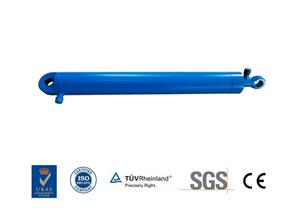Tube diameter Dn, De, D, d, Φ
When putting Dn, De, D, d, Φ together ... For example: DN200, De200, D200, d200, Φ200, can you figure it out?
Generally speaking, the diameter of the tube can be divided into outer diameter (De), inner diameter (D), and nominal diameter (DN).
DN refers to the nominal diameter of the pipe. Note: This is neither the outer diameter nor the inner diameter. It is the average of the outer diameter and the inner diameter, which is called the average inner diameter. When the design uses the nominal diameter DN to indicate the pipe diameter, there should be a comparison table between the nominal diameter DN and the corresponding product specifications. Water or gas transportation steel pipes (galvanized or non-galvanized steel pipes), cast iron pipes, steel-plastic composite pipes, and polyvinyl chloride (PVC) pipes shall be marked with a nominal diameter "DN" (such as DN15.DN20)
De mainly refers to the outer diameter of the pipe. Generally marked with De, all need to be marked in the form of outer diameter X wall thickness. It is mainly used to describe seamless steel pipes, plastic pipes such as PVC, and other pipes that require a clear wall thickness. Take galvanized welded steel pipe as an example, the two labeling methods using DN and De are as follows: DN20 De25 × 2.5mm
DN25 De32 × 3mm
DN32 De40 × 4mm
DN40 De50 × 4mm
We are accustomed to using DN to label welded steel pipes, and rarely use De to label pipes without involving wall thickness; however, labeling plastic pipes is another matter; it is still related to industry habits. In the actual construction process The pipelines such as 20, 25, and 32 we refer to briefly refer to De, not DN. There is a difference in specifications here. Failure to figure out can easily cause losses in the procurement and construction process. The connection method of the two pipe materials is nothing more than screw connection and flange connection. Other connection methods are rarely used. Galvanized steel pipe and PPR pipe can use the above two types of connections, except that the pipe with less than 50 is more convenient, and the flange with more than 50 is more reliable.
Note: If two metal pipes of different materials are connected, it is necessary to consider whether a galvanic reaction will occur. Otherwise, it will accelerate the corrosion rate of the active metal pipe. It is best to use a flange connection and use rubber gaskets to separate the two pipes. These metals are separated, including bolts, to be separated by gaskets to avoid contact.
D generally refers to the inner diameter of the pipeline
d represents the inner diameter of the concrete pipe
Φ represents the diameter of a common circle
Of course, Φ can also indicate the outer diameter of the pipe, but at this time it should be multiplied by the wall thickness. For example: Φ25 × 3, it means the pipe with an outer diameter of 25mm and a wall thickness of 3mm.
For seamless steel pipes or non-ferrous metal pipes, "outer diameter x wall thickness" shall be marked. For example: Φ107 × 4, where Φ can be omitted.
Some steel pipes in China, ISO and Japan are marked with wall thickness to indicate the steel pipe wall thickness series. For this type of steel pipe, the expression is pipe outer diameter × wall thickness. Such as: Φ60.5 × 3.8
The respective ranges of De, DN, d, and ф!
De-- PPR, PE pipe, polypropylene pipe
DN-- Nominal diameter of polyethylene (PVC) pipe, cast iron pipe, steel-plastic composite pipe, galvanized steel pipe
d-nominal diameter of concrete pipe
ф--The seamless steel pipe or non-ferrous metal pipe should be marked with "outer diameter x wall thickness"




